7 Email Marketing Techniques that bring instant results
Your typical consumer’s inbox is packed with marketing messages, competitive subject lines, and a slew of attention-seeking emails. With over 144 billion emails exchanged every day, email marketing is still one of the most effective methods for corporate communication. So, how does the signal distinguish itself from the background noise?
Finding the key to create emails that stand out is vital for your bottom line, whether that bottom line is cold, hard cash or community participation or anything in between. In this article, I will share with you 7 best email marketing techniques that you can use to level up your email marketing game. Let’s jump right into the details!
7 Best Email Marketing Techniques For Maximizing Results
1. Get personal, but don’t cross boundaries
There is no doubt that email personalization is a terrific approach that has been shown to have incredible benefits on your mail marketing. According to Invesp, personalized promotional mailings had 29 percent higher unique open rates and 41 percent higher unique click rates than non-personalized mailings. The advantages extend even farther. According to an Epson study, 80 percent of buyers are more likely to buy from a brand that gives a personalized experience.
While it is beneficial to get closer to your consumers, you need to be cautious not to overstep on the boundaries. Overusing names can only make you appear strange to your customers and harm your reputation.
According to a YouGov survey, 32% of participants dislike personalized messages because they feel like marketers are breaching their privacy, while 29% dislike marketers using their name in emails because it makes them feel irrelevant. This is when having the correct customer data will come in handy. Another possibility for personalisation is to use generic user data, such as birth dates.
According to Experian research, birthday emails earn 342 percent more revenue per email, 179 percent more unique click rates, and 481 percent more transaction rates than advertising emails. This appears to be a compelling incentive to incorporate personalisation emails into your email marketing efforts, doesn’t it?
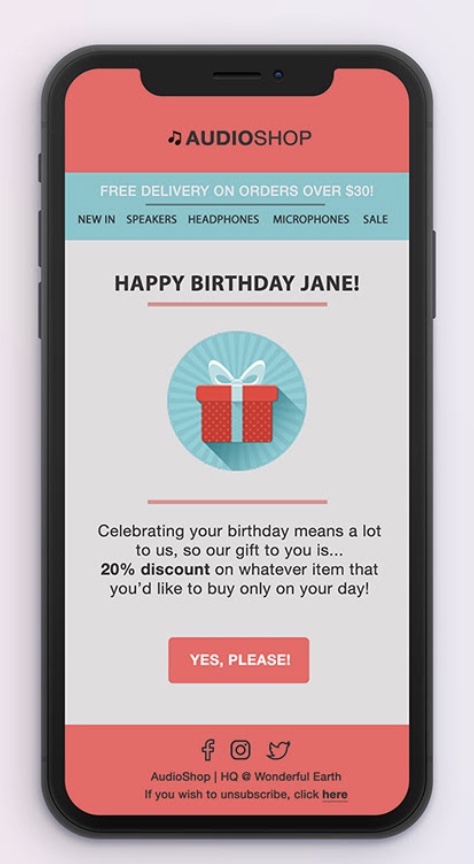
However, keep in mind that personalization entails more than simply mentioning each customer’s name in the email. There are other additional options, and it is up to you to try and choose which option works best for your email list.
2. Keep your subject lines short and clear
47 percent of email receivers open emails only based on the subject line, and tailored emails are 22 percent more likely to be opened. This demonstrates the importance of subject lines in the effectiveness of your email marketing campaign.
However, data reveal that it is not only the subject line that should be considered, but also the amount of characters employed. Indeed, email subject lines of 6-10 words have the highest open rate. Another data that works in your favor is that subject lines with a sense of urgency or exclusivity have a 22% higher open rate.
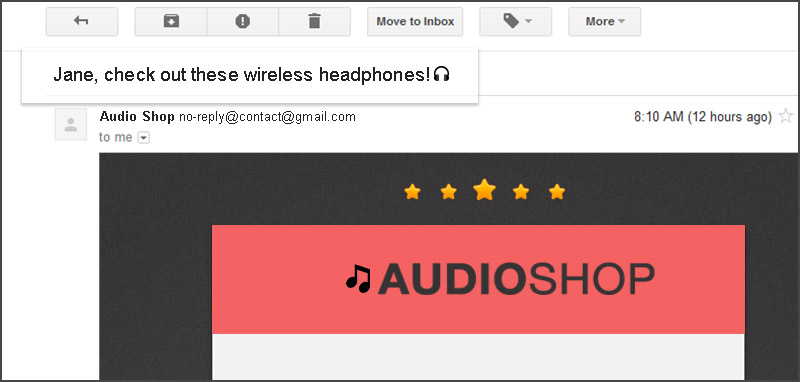
What appears to be an easy one-liner can, in fact, take a long time to perfect. Subject lines may make or break the success of your campaign. So, the next time you’re creating one, remember that the more you can say with less, the better your odds of a successful campaign.
3. Pick the Right Time for Email Sending
When it comes to the success percentage of your email campaigns, timing is important. You are undoubtedly striving for a higher open and click-through rate, so choosing the right time is an important factor to consider.
Another reason is that loyal audiences may wish to interact with your content (share with friends or on social media, etc.). Keeping this in mind, you should employ all available resources to establish the optimal time for them.
There is no such thing as a one-size-fits-all time to send. The type of business you own is also an important issue to consider. Here is a table that will assist you in determining the best timing for your sort of business:
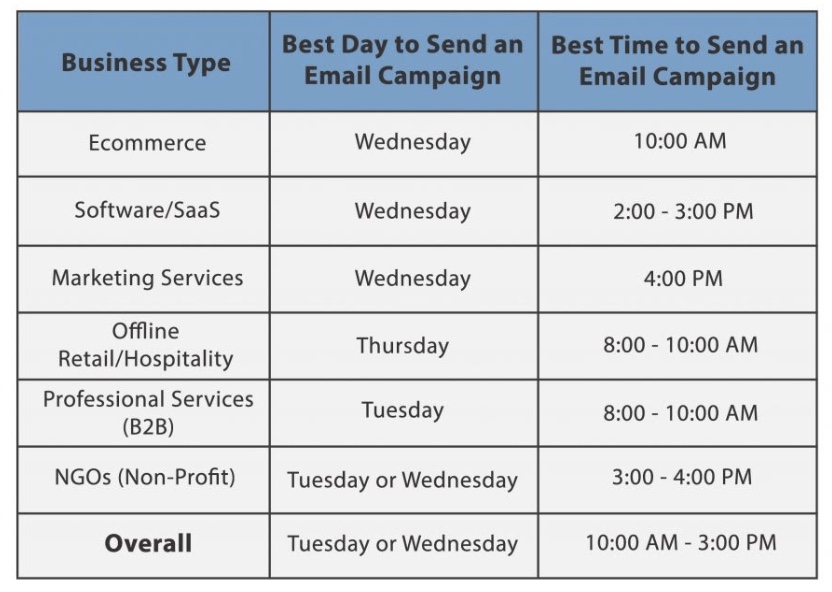
On average, 51 percent of businesses are presently adopting automation, which is not surprising given the plethora of marketing automation solutions available to assist you in performing extensive multivariate testing in order to determine the optimal timing for contacting your audience. As a result, your company will save a lot of time and money, and you will be able to focus on the most critical components of your email marketing strategy.
You may add AI delivery with the help of technologies like these, which basically means that the automation software learns what resonates most with your audience by tracking their behaviors. It takes a certain amount of time (from the time people join your email list) to intelligently determine when users engage the most with your app based on previous activity.
As a result, users will receive your messages at the optimal time. This form of email optimization will undoubtedly save you time and money spent on ineffective email marketing techniques.
4. Give Away Freebies
Promotional gifts not only boost the number of subscribers, but they can also raise your income. You may be cautious about giving things out for free, but this type of promotional content is what many subscribers want and are prepared to offer you their email address in exchange for. Freebies such as templates and tools are the most popular, with a click-through rate ranging from 26% to 66%.
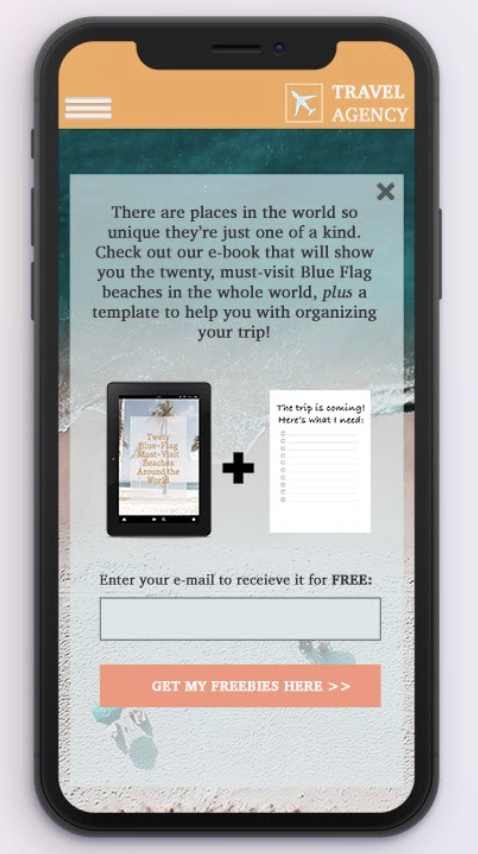
However, as much as you want your email list to expand, there are regulations to follow, and by rules, we mean the CAN-SPAM Act (Controlling the Assault of Non-Solicited Pornography and Marketing Act). The CAN-SPAM Act requires that every email contain a relevant subject line, your commercial email address at the bottom, and an unsubscribe button — no exceptions.
As a result, even if your subscribers gave you their email address in exchange for a freebie, you must still follow the law, not only because of the legal ramifications, but also – and more importantly – because building trust between your brand and your customers is the most important marketing strategy you have up your sleeve!
5. Send Mobile-Friendly Emails
Imagine that you receive an email that is visually appealing, but when you open it on your phone, the graphics do not appear and the interface is unappealing. As a result, you are unable to interact with the amil. This situation can have a significant impact on the success of your email campaign if you let it happen.
Here are some basic design techniques to help your marketing approach avoid your subscribers’ dislikes:
- Stick to one-column emails.
- Put crucial text in the center.
- Have a call-to-action button that is simple to click.
- Increase the text size.
- Optimize for mobile devices
- Use small-sized images
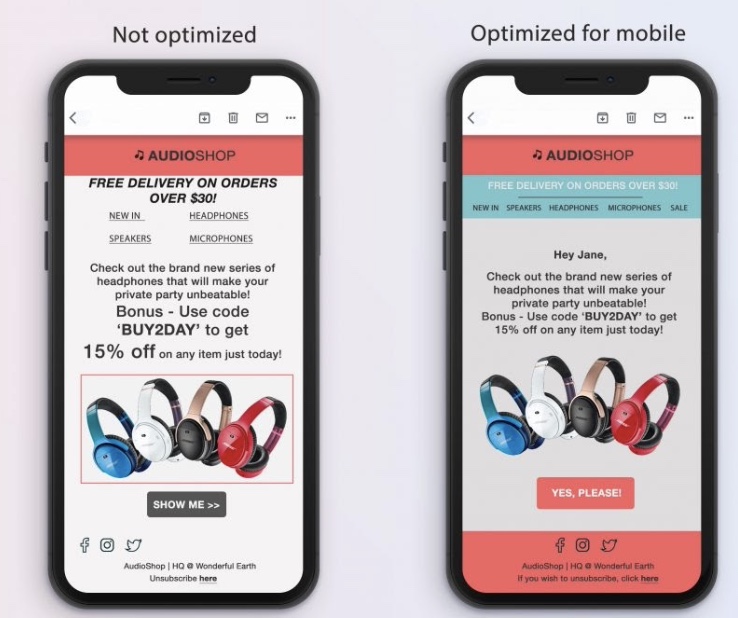
80% of Internet users have at least one mobile device, and this figure is anticipated to rise in the coming years. As a result, your email marketing strategy should always include a mobile-friendly design. Regardless of where your subscribers read their email, make sure to constantly deliver high-quality emails.
6. Segment Your Subscribers
Segmenting your email lists enables you to communicate with your subscribers in a more direct and relevant manner. It provides them with the right information at the right time. The results will be outstanding if you perform it correctly.
Optimove discovered that target groups with up to 150 customers had a $1.90 uplift per customer in their research on the power of segmentation for marketing initiatives. The most significant increase was seen in groups of 1,500 or more. This demonstrates that the greater the group size, the greater the variety of feasible campaign results.
Businesses who employ email segmentation saw a 24 percent increase in sales, according to Lyris’ Annual Email Optimizer Report. Subscribers prefer to receive information that is relevant to their likes and dislikes because it promotes a more seamless customer experience. Keeping this in mind, it is critical to appropriately segment your lists in order to increase engagement.
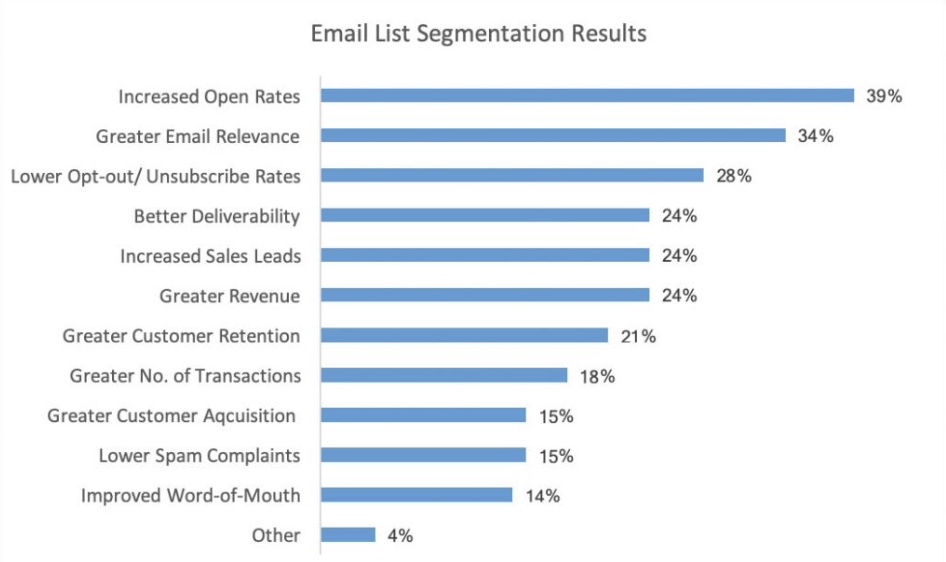
Here are Some quick and easy segmentation techniques to help you in the process:
-
Segmentation based on demographic data. One of the most fundamental ways to segment your list is based on demographic data (gender, age, location, income level, company position, etc.). Knowing the gender of your consumers is critical if you are a clothing company. However, if you are a B2B software developer, demographics such as their position in their company will be quite important.
-
Email engagement segmentation. This may seem simple, but it has a significant impact on overall performance. The open rate and click-through rate are the most important KPIs in this case. You can use this form of segmentation to distinguish between active and inactive users (for example, someone who hasn’t opened your email in 90 days). Following the creation of this section, you may target your inactive users with an unique re-engaging campaign.
-
Segmentation based on previous purchases. This is another basic yet efficient method for optimizing your targeting. You might begin by offering recommendations for similar purchases made by these customers. Assume someone purchased a hair product from your website. You can make an educated judgment about when this product will be out of stock and send an email to the same user recommending that they reorder ahead of time.
-
Positional segmentation in the sales funnel. Segmenting your consumers based on where they are in the sales funnel is an effective approach to personalize your content. The point is that you can’t use the same content to target users at the bottom of the funnel as you can at the top. If they are at the bottom — a group of brand-new subscribers – send more generic content with a variety of products or features. However, if they’ve previously signed up and interacted with your content, you can utilize that information to figure out what they’re interested in and target them more specifically.
7. Re-engage with Inactive Customers
If you do not work hard to send informative and useful material, you will lose around a quarter of your subscribers each year. Email list deterioration is unavoidable, however it can be mitigated to some extent. So, how do you keep your subscribers active, or, to put it another way, how do you reactivate dormant subscribers?
Re-engagement email campaigns, also known as win-back campaigns, entail sending a series of emails to inactive subscribers in order to entice them to interact with you.
Before you do this, you need to first define what inactivity means to you:
-
What does being inactive mean to you, and for how long? Is it inactive for a period of three, six, or nine months? Consider what your subscribers no longer perform that satisfies your inactive criterion. They don’t log in as frequently as they used to, or perhaps they haven’t purchased anything in the last month?
-
Consider all of the actions that your subscribers take or do not take that meet your inactive criterion. Many businesses, for example, strive to engage with their subscribers as much as possible. This leads to a situation in which they send out too many emails, which the subscribers find irrelevant. Also, never underestimate the power of a well-designed email. If your emails aren’t user-friendly and mobile-optimized, there’s a chance they’ll be designated as spam, deleted, or never opened.
To come up with the right approach, you need to first answer the questions listed above before focusing on designing the re-engagement campaign. There are numerous inventive ways to carry out the take-back. Some opt for “we miss you” ads, as well as discounts and promo codes — or even both.
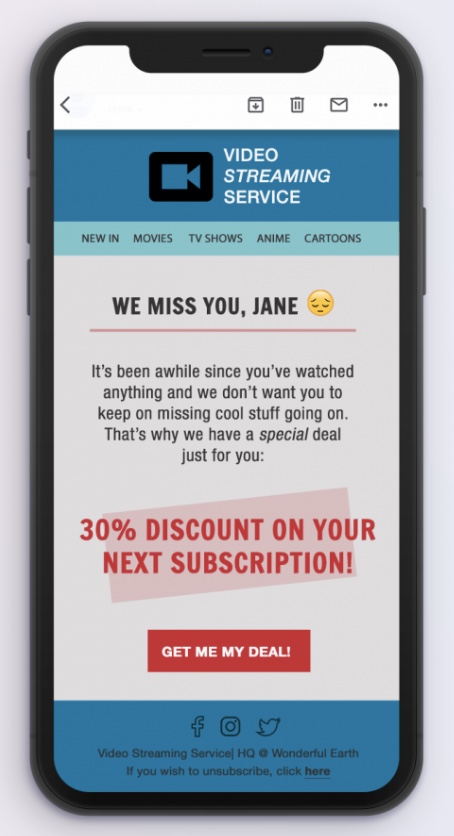
Win-back campaigns are not always easy. However, those that invest in re-engaging efforts in their email marketing receive a $28.50 return on investment for every $1 spent. This indicates that reactivating inactive customers is less expensive than obtaining new ones.
Whatever approach you use, you may send a certain number of emails and your subscribers do not respond, it’s preferable to simply ask them about their email preferences in this scenario. Allow them to select whether or not they want to continue receiving your emails. Spending resources on subscribers who will never return, regardless of your plan, is better for your email marketing success than cleaning up your email list.
Best Email Marketing Tool For SMEs
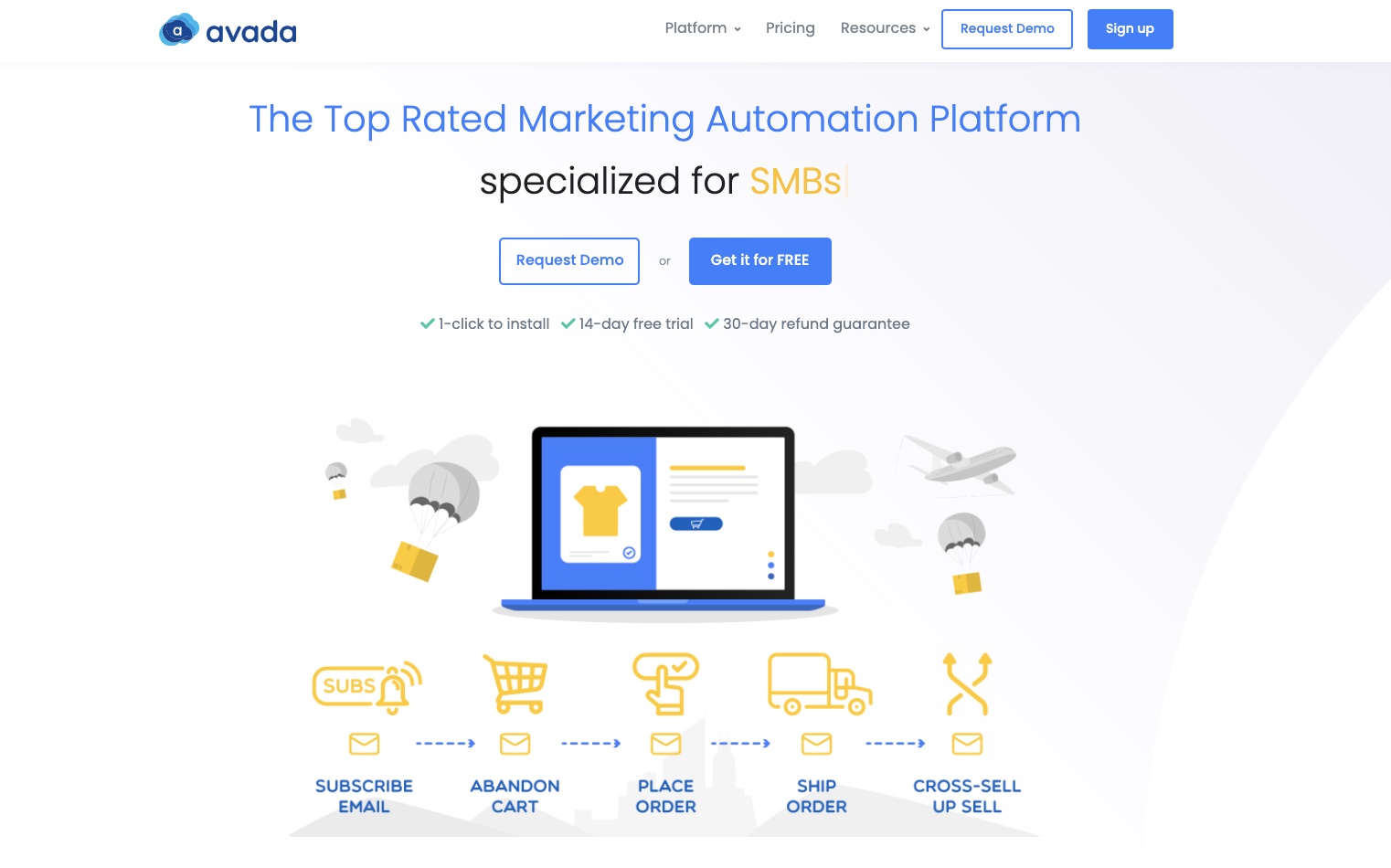
AVADA Marketing Automation is an advanced email and SMS marketing software that can help you create, run and manage email marketing campaigns. If you want to implement the email marketing techniques you’ve learnt in this article, try out this tool!
Final words
That’s it! I hope this article has provided you with valuable email marketing techniques that you can use to maximize the results of your email marketing campaigns. Please feel free to leave comments below for further discussion on this topic!
New Posts






